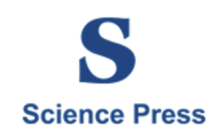Resource information
Tillage and fertilization practices used in row crop production are thought to alter greenhouse gas emissions from soil. This study was conducted to determine the impact of fertilizer sources, land management practices, and fertilizer placement methods on greenhouse gas (CO2, CH4, and N2O) emissions. A new prototype implement developed for applying poultry litter in subsurface bands in the soil was used in this study. The field site was located at the Sand Mountain Research and Extension Center in the Appalachian Plateau region of northeast Alabama, USA, on a Hartsells fine sandy loam (fine-loamy, siliceous, subactive, thermic Typic Hapludults). Measurements of carbon dioxide (CO2), methane (CH4), and nitrous oxide (N2O) emissions followed GRACEnet (greenhouse gas reduction through agricultural carbon enhancement network) protocols to assess the effects of different tillage (conventional vs. no-tillage) and fertilizer placement (subsurface banding vs. surface application) practices in a corn (Zea mays L.) cropping system. Fertilizer sources were urea-ammonium nitrate (UAN), ammonium nitrate (AN) and poultry litter (M) applied at a rate of 170 kg ha-1 of available N. Banding of fertilizer resulted in the greatest concentration of gaseous loss (CO2 and N2O) compared to surface applications of fertilizer. Fertilizer banding increased CO2 and N2O loss on various sampling days throughout the season with poultry litter banding emitting more gas than UAN banding. Conventional tillage practices also resulted in a higher concentration of CO2 and N2O loss when evaluating tillage by sampling day. Throughout the course of this study, CH4 flux was not affected by tillage, fertilizer source, or fertilizer placement method. These results suggest that poultry litter use and banding practices have the potential to increase greenhouse gas emissions.



